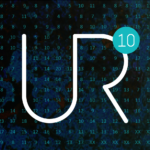
Stories of impacts and innovations in Small Island Developing States
February 14, 2020 3:38 am Leave a comment
Stories of impacts and innovations in Small Island Developing States
Small island developing states (SIDS) are the most exposed to disasters and the impacts of a changing climate. Innovating to address these issues is therefore a necessity for their survival. Over the past 10 years, countries and territories have made strategic advancements combining cutting edge technology and innovative financing strategies with human centric solutions.
This full-day Focus Day event will showcase critical innovations spearheaded by SIDS impacting how they build resilience, culminating in an interactive game experience that has been used to share concepts of disaster risk financing across the Caribbean.
Sessions:
1. Comprehensive DRM programs
Disasters can create opportunities for risk informed development. For example, the devastation caused by hurricanes Irma and Maria in 2017 in Sint Maarten, as well as hurricane Matthew in Haiti in 2016 created inconceivable challenges, from ensuring continuity of basic government or utility services to massive debris collection and management or resumption of tourism services crucial to local economies, creating an opportunity for a comprehensive program to address disaster risks, while also bringing new opportunities for growth. Similarly, hurricanes Ivan and Tomas led to the development of disaster vulnerability reduction projects throughout the Caribbean. In this session, we will showcase how DRM programs evolve in the aftermath of disasters.
2. Housing resilience
A home can be a family’s biggest asset and a source of generational wealth; so, with one disaster most of a family’s wealth can be wiped away. The destruction of homes also has major social impacts and can negatively affect childhood learning and development. Yet, the housing sector remains highly vulnerable to disasters. In 2017, Hurricane Maria caused major damage to more than 70% of the housing stock in Dominica, with damages totaling US$354 million which represents 66% of the 2016 GDP. In this session, we will showcase steps SIDS are undertaking to address these vulnerabilities through innovative housing resilience initiatives including home repair programs, affordable housing projects, concessional climate financing at the household level, and policy development.
3. Coastal Resilience
Coastal Resilience. In most small coastal states, when a disaster strikes, a large part of the population, infrastructure and businesses, generally concentrated in coastal areas, are directly or indirectly affected, therefore jeopardizing their sustainable development. Climate change and sea level rise, in combination with socio-economic growth, are likely to exacerbate this situation. Innovative methodologies and solutions are needed to tackle these unprecedented challenges. In this session, we will show how innovative and participatory approaches to risk modelling and coastal management can help enhancing climate and disaster resilience in remote small island states showcasing examples from the Pacific and the Caribbean regions. State-of-the-art methodologies, models and data combined with lessons learned by local practitioners will shed light on possibilities to adaptation for present and future challenges. New findings on the impact of sea level rise on coastal flooding and erosion across the Caribbean will also be presented.
4. Resilient Transport
Transportation networks are a critical infrastructure for each country as they enable access and connectivity for economic activity; for access to services (for example, commerce, tourism, education, and health); and for emergency situations (for example, evacuation). Natural hazards can have a deleterious effect on transport infrastructure, particularly on road networks and airports. In this session, we will showcase how the World Bank is promoting the Resilient Transport agenda in the SIDS by presenting some of the work done over the past few years such as the use of drones for landslide monitoring, the lifecycle approach for asset maintenance, LiDAR surveys for improved highway designs, among other approaches to support building resilience in transportation networks.
5. Understanding infrastructure investment needs – The case of Haiti
Haiti is one of the most exposed country to natural disaster and lately the economic and political situation exacerbated the vulnerability of middle and lower class. Targeting investment in most vulnerable area is a top priority in a country where the needs are widespread. Currently, Haiti has an imbalance between vulnerable population and existing shelter capacity. Geo-spatial data and risk information have been used to improve the density of shelter and their geographic distribution. In this session we will present how using a “human approach” combined with an optimization problem automated algorithm, Haiti is laying the foundation for (risk-)informed decision making. Interactive game experience:Caribbean disaster risk financing. Hurricane Hurry is an interactive game experience that simulates natural disaster financial decision-making in complex environments such as the Caribbean – for example, after a hurricane hits, when needs are great, resources are limited, and the pressure is on to act quickly. The World Bank has used this game in workshops with government officials across the Caribbean to convey key disaster risk financing (DRF) concepts and instruments in a provocative, fun and memorable way. This session will help participants become more familiar with the importance of developing DRF strategies; experience the choices and dilemmas that stakeholders feel when making decisions; and learn about non-traditional approaches to communicating complex information.
Interactive game experience:
Caribbean disaster risk financing
Hurricane Hurry is an interactive game experience that simulates natural disaster financial decision-making in complex environments such as the Caribbean – for example, after a hurricane hits, when needs are great, resources are limited, and the pressure is on to act quickly. The World Bank has used this game in workshops with government officials across the Caribbean to convey key disaster risk financing (DRF) concepts and instruments in a provocative, fun and memorable way. This session will help participants become more familiar with the importance of developing DRF strategies; experience the choices and dilemmas that stakeholders feel when making decisions; and learn about non-traditional approaches to communicating complex information.
Organizer: World Bank
